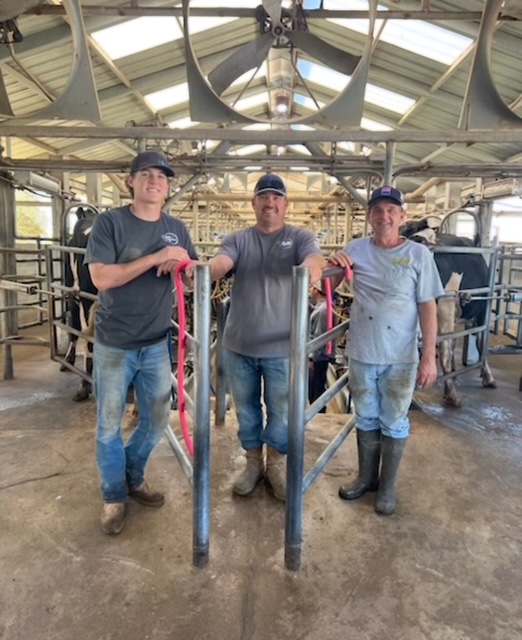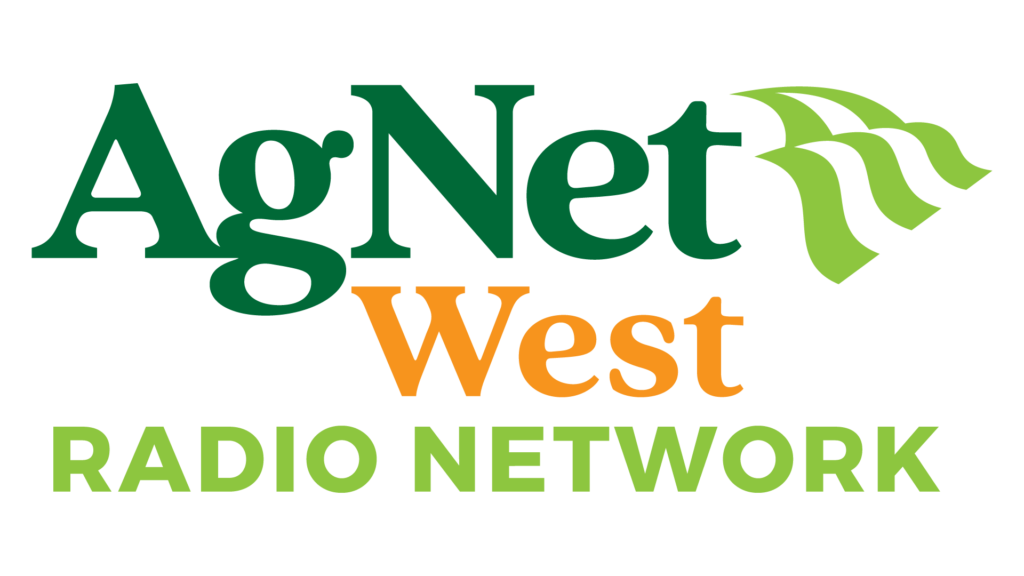Carrying the Family Legacy
In Tulare County, where agriculture and community are woven together, Joseph Bakker stands as the third generation in a long line of dairy farmers. His family story begins in 1968, when his grandfather moved to the region and started what would become a lasting tradition in California dairy.

Today, Bakker operates two major dairies—Countryside Dairy, home to 4,000 Holsteins, and Back Road Ranch, milking 2,000 Jerseys. Alongside these operations, he manages about 2,000 acres of farmland, growing corn silage, wheat silage, and a little alfalfa.
“It’s the third generation,” Bakker said. “My grandpa, my dad, and now me. We’ve been blessed to do what we love.”
A Family Rooted in Sports
While farming is the family’s livelihood, sports are a shared passion. Joseph and his wife, both former high school athletes, raised four children—Max, Joey, Brody, and Blaze—who carry that same competitive spirit.
Max, now 20, was a standout quarterback and “PAG Meter” All-Star (‘PAG Meter all star’ is an award given to high school athletes that perform well). Brody, 16, is making his mark as a wide receiver. Joey, 18, adds her own talents to the mix, while Blaze, 10, is already charging down the field in youth football. For nearly a decade, Joseph has coached the Visalia Cavs youth program.
“Football just started yesterday,” he laughed. “Hopefully we make it to the Valley Championship and are still playing at Thanksgiving.”
Sports, he says, mirror farming in their values—discipline, teamwork, and resilience. He sees those traits on display at Central Valley Christian (CVC), where the Cavaliers’ football program thrives in a close-knit, faith-based community.
Community and Faith at CVC
Bakker credits CVC not just for athletic excellence but for its strong sense of community.
“It’s a community of believers,” he explained. “People stand up for each other. The boys work hard, they’re committed, and that’s what the Cavaliers pride themselves on.”
While decades ago CVC’s student body was 80% farming families, that number has dwindled due to the growing challenges facing California agriculture. Even so, local dairymen remain key supporters of the school.
Farming Then and Now
The Tulare-Visalia area has always been a stronghold for dairy, but farming conditions have shifted dramatically since Joseph’s grandfather’s time. He points to water restrictions and changing regulations as the biggest forces reshaping the industry.
“They’re regulating the water we can pump out of our own wells,” he said. “We’re going to have to adapt to these new rules, and it’s not easy to get the same tonnage from the land.”
Some farmers have shifted to single cropping—growing only corn silage, for example—because there isn’t enough water to sustain both corn and wheat. Yet Joseph remains optimistic, believing that efficiency and smart resource management can help farmers adjust.
Water: California’s Biggest Agricultural Challenge
Bakker calls water “the hugest thing” for California agriculture. Without it, the state’s ability to feed the world is in jeopardy.
“We use water three, four times on the dairy,” he explained. “We clean the cows, flush the lanes, and then irrigate crops. People think we’re wasteful, but we’re not. We know how to use it right.”
He believes the state must invest in water storage infrastructure, including dams, to capture rainwater that now flows to the ocean unused.
Educating the Public About Dairy
One of Bakker’s passions is correcting misconceptions about dairy farming. Too often, he says, people see negative stories online without understanding the full picture.
“I love when people ask me questions,” he said. “I tell them we treat our cows well. We house them, feed them, cool them—we do everything we can to keep them healthy. Milk isn’t just milk. It’s cheese, ice cream, pizza—things people enjoy every day.”
Bakker welcomes farm tours and encourages conversations that help bridge the gap between producers and consumers.
Milk’s Comeback and the Push for Schools
Joseph hopes milk is regaining popularity, especially among younger generations. He’s a strong supporter of efforts to get milk back into school cafeterias.
“Our Cavaliers football team has a weekly milk challenge,” he said. “I think it makes us a stronger team.”
He believes milk offers a healthier alternative to energy drinks and sugary sodas.
Labor Pressures in the Dairy Industry
While water dominates headlines, labor regulations are also a major challenge. Rising minimum wages and overtime requirements make it harder for dairies to operate profitably.
“Ag work doesn’t fit into an eight-hour day,” Joseph explained. “The guys we have love what they do, but it’s tough on employers when overtime costs go up every year.”
California’s Political Climate
Joseph doesn’t shy away from expressing his frustration with certain state priorities—such as the high-speed rail project, which he sees as wasted money compared to water infrastructure.
“They bought all this farmland for the train, and it’s just sitting there,” he said. “Meanwhile, farmers are struggling for water.”
He believes a change in leadership could bring more attention to agricultural needs.
FFA and the Next Generation
Bakker sees programs like FFA as vital for educating the next generation about where food really comes from.
“Every kid needs to understand that milk comes from a cow, not the store,” he said. “Education is the key.”
He hopes his children—especially Max, Brody, and Blaze—might one day take over the family dairies, continuing the legacy.
A Message to Consumers
Bakker’s closing message is simple:
“Dairy is a community of people who work hard and love what they do. We’re family-run, and we put in the effort so families across America can enjoy milk, ice cream, cheese, and pizza. If you understand what it takes to get those products to your table, I hope you’ll appreciate and support us more.”









